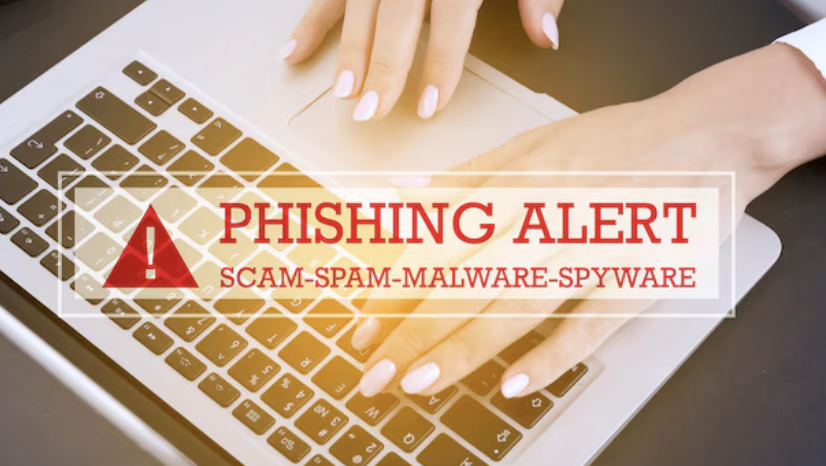Phishing attack prevention is a must in today’s digital age. Have you considered how vulnerable your personal information might be to cunning cybercriminals? As phishing attacks grow increasingly sophisticated, they can deceive even the most cautious users, leading to devastating consequences like identity theft and financial ruin. In this article, we’ll walk you through practical tips and strategies to help you recognize and prevent phishing attacks, ensuring your information stays secure.
Understanding phishing attacks

What is phishing?
Imagine receiving a message that seems to come from your bank, warning you about a critical issue with your account. This urgent request pushes you to click on a link and enter your personal details. This is a classic phishing scam, where attackers try to trick you into giving away sensitive information like passwords or credit card numbers. They often pose as trusted entities, such as banks or popular companies, using fake emails, text messages, or phone calls. By creating a sense of urgency or fear, they pressure you into acting quickly without thinking.
Phishing attacks can have various motives, but the main goal for attackers is to get valuable personal information like login credentials or other identifying details. With this data, they can commit fraud by accessing the victim's financial accounts. Once they have this information, they can use it to gain access to more online accounts, steal personal data, or even take over entire computer networks. In some cases, they might demand a ransom to return control of the system to the victim.
Am I the target?
Phishing can target anyone. Most attacks are aimed at a wide range of email addresses in hopes that some recipients will fall for the scam. Security-awareness training is crucial for helping users recognize phishing attacks and learn how to spot suspicious communications.
Why are phishing attacks so effective?
Phishing is effective because it takes advantage of human tendencies, such as trusting others, acting out of curiosity, or reacting emotionally to urgent messages. Additionally, phishing is relatively easy to carry out, with phishing kits available on the dark web, and sending bulk emails is low-cost and straightforward for attackers. Just one click can lead to a phishing attack that compromises your network and steals your data. That's why, be cautious before you click. (You can click that link for important phishing stats and insights).
Types of phishing

Email: The classic phishing trick, where scammers send out bulk emails that look like they’re from trusted sources. They’re fishing for victims by enticing them to click on malicious links or provide sensitive info. To learn more about phishing attack prevention and how to avoid and report phishing emails, click here.
Spear: Like other phishing schemes, spear phishing tricks victims by using tailored stories and deceptive scenarios. These attacks can occur via email, text messages, chat apps, or phone calls.
Vishing and smishing: Vishing (voice phishing) and smishing (SMS phishing) are similar scams but delivered by phone or text. Vishing uses a call to trick you into revealing personal info, while smishing sends deceptive texts. Both share a common trait: they occur over the phone.
Clone: Here, scammers recreate a legitimate email you’ve received before, but with malicious links or attachments swapped in. It’s a clever imitation to trick you into falling for the scam a second time. Scammers often recreate emails you’ve already received, tweaking a few details to deceive you or your employees. They replicate the original design, logos, and writing style to make the email appear authentic. Then, they resend it, pretending to be the original sender. Their goal is to trick you into clicking on a dangerous link, downloading malware, or revealing sensitive information such as passwords or credit card numbers.
Pharming: Pharming redirects you from a legitimate website to a fake one designed to steal your information. It’s like setting up a fake road sign to divert you to a different destination. Often referred to as “pharmaceutical phishing” or “phishing without a lure,” “pharming” blends the terms “phishing” and “farming” to highlight the widespread scope of the attack.
Whaling: A whaling attack is a form of spear-phishing aimed at top executives. In these attacks, scammers pose as trusted and familiar entities to persuade the victim to divulge confidential information or initiate a wire transfer to a fake account.
Angler: Angler phishing is a sophisticated scam where attackers mimic customer support on social media platforms to trick users into revealing personal information. This type of phishing takes its name from the anglerfish, which uses a glowing lure to attract its prey. In a similar fashion, angler phishers create fake social media profiles, often pretending to be representatives from banks or other organizations, to deceive users seeking help. These users, trying to get support on platforms like Twitter, Facebook, or Instagram, are misled into interacting with these fake accounts, leading them to malicious sites controlled by the attackers.
Dangers of phishing

Phishing isn’t just an annoying scam—it can have serious consequences if you fall for it. When you're tricked by a phishing attack, your personal information, financial details, or even access to your accounts can be compromised. Understanding the dangers of phishing and knowing what can go wrong can help you stay vigilant and protect yourself from these potentially devastating attacks.
| Personal phishing risks | Organization related phishing risks |
| Theft of money from your bank account | Loss of company funds |
| Unauthorized charges on your credit cards | Exposure of personal data |
| Loss of access to your photos, videos, and files | Inaccessibility to important files |
| Fake social media posts made from your account | Harm to your organization's reputation |
| Cybercriminals pretending to be you, putting your friends & family members at risk | Prolonged system outages/downtime |
Phishing attacks prevention: Your best defense

No single cybersecurity measure can prevent all phishing attacks. Your organization should implement a range of cybersecurity technologies and adopt a multi-layered security strategy to minimize both the frequency of phishing attacks and their impact when they occur. Users can take several steps for effective phishing attack prevention to reduce the likelihood of a successful attack:
Inspect emails for red flags: Check email headers for suspicious sender names or addresses, and be cautious of attachments and links that might conceal malicious code. Always exercise caution with emails from unknown sources.
Avoid sharing personal information: Never exchange sensitive details such as Social Security numbers, bank information, or passwords via email, even if communicating with a trusted individual. If a website’s URL doesn’t begin with “https” or you don’t see a closed padlock icon next to the URL, avoid entering any sensitive information or downloading files from that site. While such sites might not always be phishing attempts, it’s safer to err on the side of caution.
Block spam: Utilize built-in spam filters in email clients, and consider third-party filtering services for better control. To minimize spam, unsubscribe from mailing lists, avoid opening spam emails, and keep email addresses private, especially on public websites.
Implement email security protocols: Use email authentication methods like SPF, DKIM, and DMARC to verify the authenticity of emails. Configuring these records can make it harder for attackers to spoof your domain in phishing attacks.
Employ browser isolation services: These services execute browser code in the cloud, preventing malware from affecting your system through web-based email clients.
Use a secure web gateway: A secure web gateway (SWG) examines data and network traffic for known threats, blocks harmful requests, and can prevent the download of malicious files or sharing of sensitive data.
Deploy anti-phishing tools: Utilize anti-phishing tools and technologies to identify and block fraudulent websites and emails. Firewalls are a key defense mechanism, serving as a barrier between your computer and potential attackers. Combining both desktop and network firewalls enhances your security and lowers the risk of unauthorized access to your system.
Conduct security awareness training: Technical defenses alone aren’t enough to fend off phishing attacks, which is why security awareness training is essential. This training should help employees understand the risks of phishing and teach them how to spot and report suspicious emails. Running simulated phishing exercises can reinforce this training, showing how well your team can handle real threats and pinpointing areas for improvement. When employees fall for these simulations, it’s important to follow up with them, discussing the risks and proper reporting procedures. By reviewing the results of these exercises, organizations can enhance their security measures, improve training, and add extra layers of defense against rising phishing attacks.
Effective phishing attack prevention involves staying vigilant, using advanced security tools, and educating yourself and your team. By understanding the various types of phishing and implementing strong defenses, you can significantly lower the risk of these attacks. For more tips on how to keep your family safe from online threats, check out our safer kids online guide HERE.